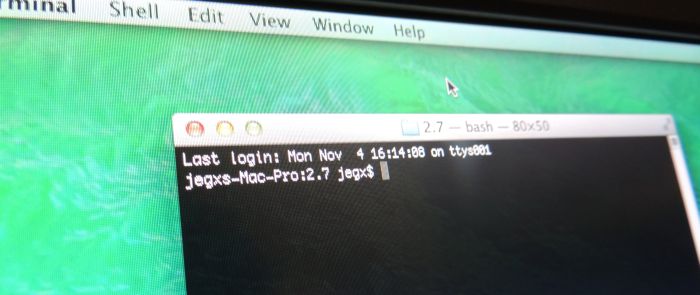

- #Find large files mac os x terminal how to
- #Find large files mac os x terminal pdf
- #Find large files mac os x terminal zip file
- #Find large files mac os x terminal tv
- #Find large files mac os x terminal download
So, you can locate the biggest files on your device, just like that: Although some users find commands complicated, if you use them correctly, you can find anything on your Mac.
#Find large files mac os x terminal how to
How to find biggest files on Mac via TerminalĪnother way to locate large files on your Mac is to use Terminal. But, if you tend to keep many files on your machine, you may consider using the Storage Management app tiresome. This method is great for those who don’t have a lot of large files on their Mac.
#Find large files mac os x terminal tv
Here you can choose to store all your files in iCloud, remove large files like movies and TV shows, turn on Empty Trash Automatically, and reduce clutter. The Storage Management app also shows the exact size of each document as well as the date you opened it last.Īpple provides helpful recommendations at the top left to help you optimize your storage.

#Find large files mac os x terminal pdf
You’ll find some old movies and archives for sure.ĭownload Free PDF I agree to receive Mac tips and updates from MacPaw - but not too often.įind large files using the Storage Management appĪnother solution is to use the built-in Storage Management app. Here you can tell your Mac to search for large files exceeding a specified size. This will reveal the “+” button below the search bar.

Looking for the large items may take some time. So, checking the Downloads folder on your Mac may help you find lots of forgotten large files and documents that you don’t need anymore.
#Find large files mac os x terminal download
You may automatically download thousands of files and forget to remove them. But, usually, the most common destination of all large files is the Downloads folder. When looking for large files on their Macs, users often start scanning a bunch of folders stored on their machines. Keep reading to discover how to locate such files on your Mac and delete them for good. Even if it seems like there is no app or program that would take a considerable amount of storage, the large files may be hidden deep down in your Mac’s memory. No matter how much space you have on your Mac, one day, you may see a “Your disk is almost full” notification. But to help you do it all by yourself, we’ve gathered our best ideas and solutions below.
#Find large files mac os x terminal zip file
Terminal will then spit out a few lines of code indicating that your zip file has been unzipped and the files within the folder should now be available on your desktop.So here's a tip for you: Download CleanMyMac to quickly solve some of the issues mentioned in this article. Joshuas-MacBook-Pro-2:desktop joshuaerickson$ unzip test.zip This means to Change Directory to Desktop. Joshuas-MacBook-Pro-2:~ joshuaerickson$ cd desktop Last login: Wed Jan 28 13:47:29 on console When you have terminal open, type in the following commands. You can either search for Terminal in upper right corner or locate it in the Utilities folder, which is in the Applications folder. zip file to the desktop, it will make it easier to find your. Windows/PC users: Try WinRAR should a workaround be needed to unzip a folder! Step 1- Move. You can also access it by searching for Terminal in OSX's search function, located in the top right part of the screen within the Finder. It is located in the Utilities folder within the Applications folder. Terminal is an application that provides provides text-based access to the operating system, in contrast to the mostly graphical nature of the user experience of OS X, by providing a command lined interface to the operating system.


 0 kommentar(er)
0 kommentar(er)
